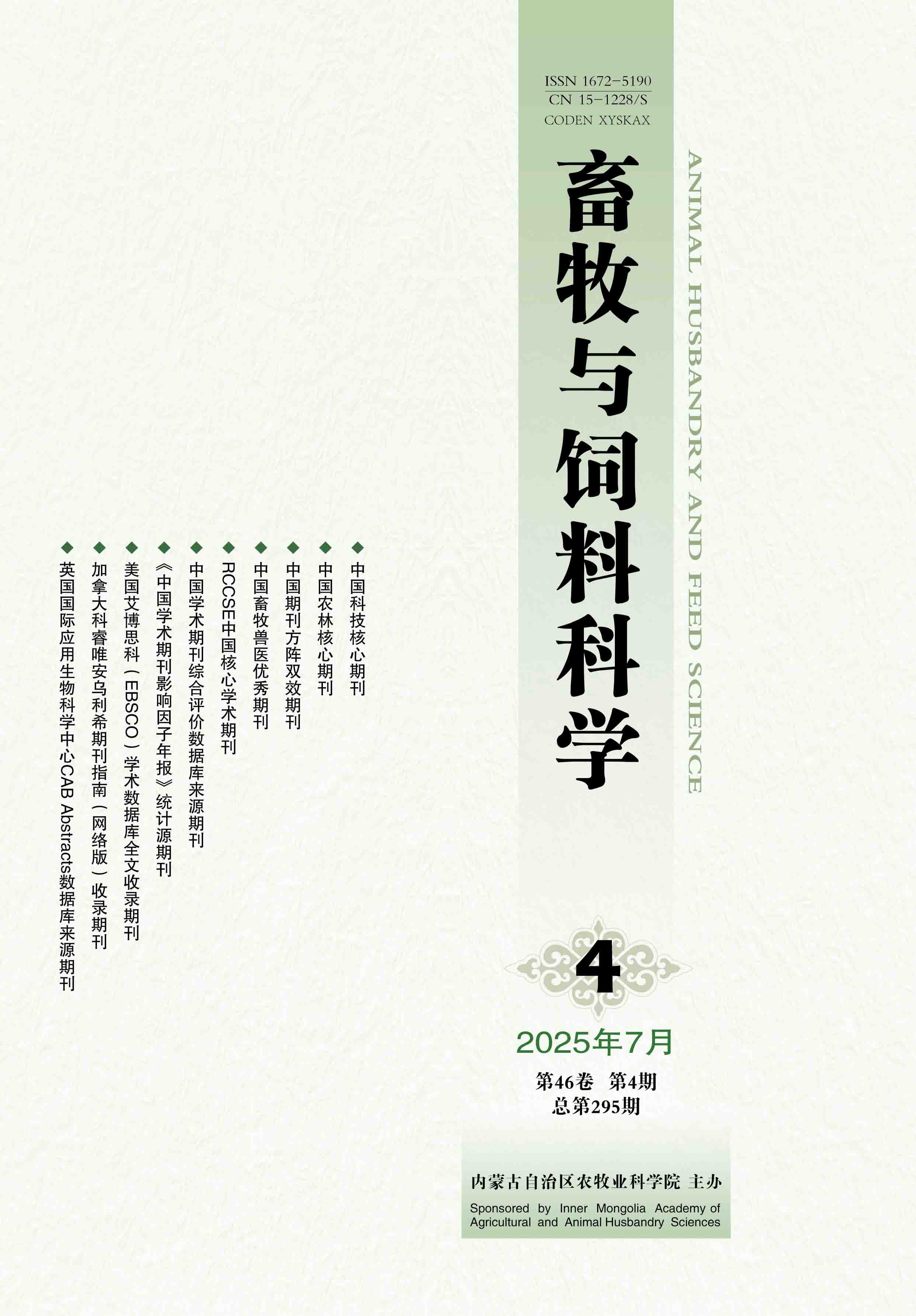Select
Effects of Different Forms of Iron and Selenium Supplementation on Growth Performance, Blood Biochemical Parameters and Immune Performance of Piglets
LI Liang-liang, WANG Yu-xia, XU Fang-fang, LI Feng-hua, JIAO Li
2021, 42(2):
11-18.
doi:10.12160/j.issn.1672-5190.2021.02.003
Abstract
(
488 )
PDF (792KB)
(
95
)
Save
References |
Related Articles |
Metrics
[Objective] To investigate the effects of different forms of iron and selenium supplementation for sows and piglets on growth performance, blood biochemical parameters and immune performance of piglets. [Method] Thirty-two sows were randomly divided into 8 groups with 4 individuals in each group. The sows in groups 1-4 received the dietary supplementation of ferrous sulfate and sodium selenite, and those in groups 5-8 received the dietary supplementation of iron glycine chelate and selenomethionine. The piglets produced by sows in groups 2 and 6 were intramuscularly injected with iron and selenium mixture on the 3rd day after birth, those in groups 3 and 7 received the dietary supplementation of ferrous sulfate and sodium selenite, and those in groups 4 and 8 received the dietary supplementation of iron glycine chelate and selenomethionine. The piglets in groups 1 and 5 fed a basal diet and received no supplementation of iron and selenium. Sows were fed with the experimental diets from the 30th day before the expected date of delivery, and piglets were fed with the experimental diets from the 7th day after birth. The experiment was finished on the day of weaning of the piglets (21th day after birth). The growth performance indexes, blood biochemical parameters and immune function indicators of the piglets in different groups were determined and statistically analyzed, and the contents of iron and selenium in colostrum and normal milk of the sows were statistically compared. [Result] Based on the same form of iron and selenium supplementation for piglets, compared with the dietary supplementation of ferrous sulfate and sodium selenite (groups 1-4) for sows, the dietary supplementation of iron glycinate chelate and selenomethionine (groups 5-8) in the basal diet of sows significantly (P <0.05) or extremely significantly (P <0.01) elevated the birth weight, weaning weight, weaning survival rate, weaning qualification rate of the piglets, increased the contents of plasma iron, plasma selenium, hemoglobin, plasma transferrin, IgA, IgG and IgM of the piglets at 2 and 21 days of age, and improved the contents of iron and selenium in sows′ colostrum and normal milk. In both forms of iron and selenium supplementation for sows, compared with no supplementation of iron and selenium, different forms of iron and selenium supplementation (groups 2-4 compared with group 1, groups 6-8 compared with group 5) for piglets extremely significantly (P <0.01) increased the weaning weight, weaning survival rate and weaning qualification rate of the piglets, and also extremely significantly (P <0.01) elevated the contents or activity of plasma iron, plasma selenium, hemoglobin, plasma transferrin, glutathione peroxidase, IgA, IgG and IgM of the piglets at 21 days of age. In addition, the dietary supplementation of iron glycine chelate and selenomethionine for piglets had better performance than the other two forms of iron and selenium supplementation for the piglets. [Conclusion] Dietary supplementation of iron glycine chelate and selenomethionine for sows and piglets effectively improves growth performance, blood biochemical parameters and immune performance of piglets.








